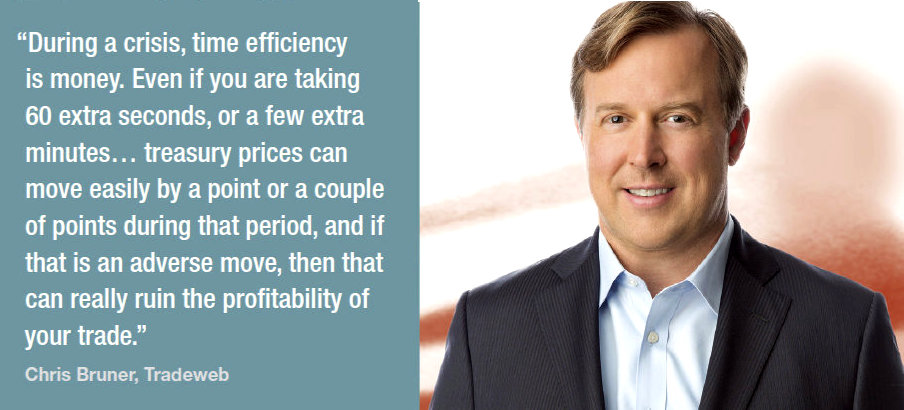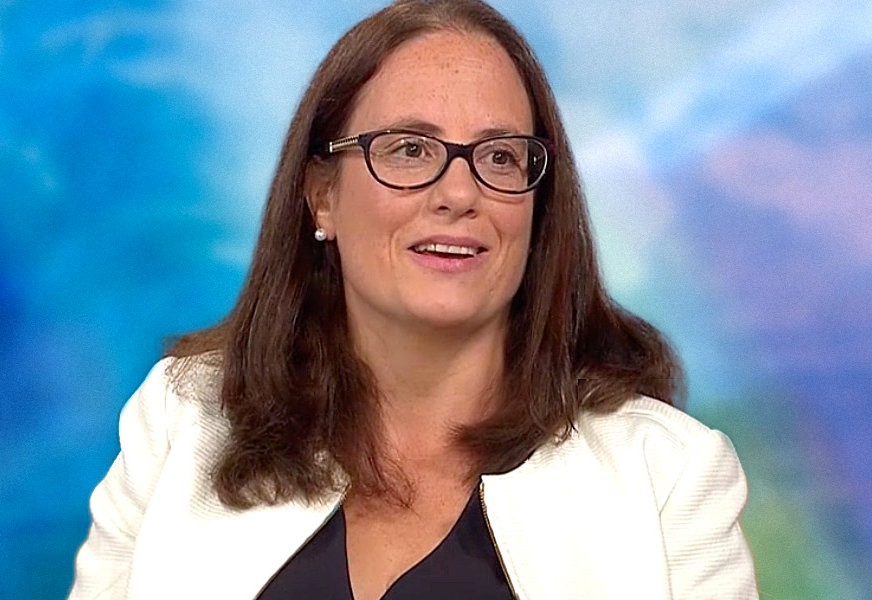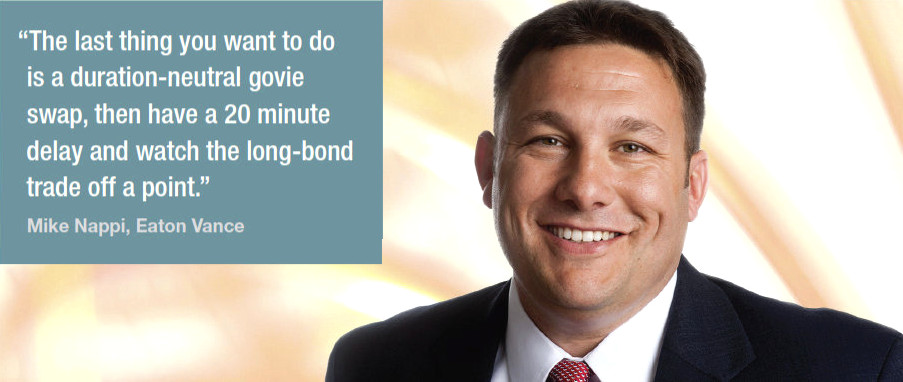 Electronic market operators are bringing together credit and rates trading platforms in an effort to deliver more efficient execution for traders.
Electronic market operators are bringing together credit and rates trading platforms in an effort to deliver more efficient execution for traders.
The interplay between the credit and rates markets across both cash and derivative instruments is complex. At its simplest, the yield on a corporate bond set against the yield on a government bond determines the corporate bond spread, with a tighter spread increasing the price of the corporate bond. Firms who hedge interest rate risk may juxtapose long and short positions in corporate bonds versus government bonds.
Ensuring that trades and spot pricing occur simultaneously is vital to minimising the cost and maximising the alpha of a trade.

“During a crisis, time efficiency is money,” says Chris Bruner, head of US credit at Tradeweb. “Even if you are taking 60 extra seconds, or a few extra minutes, we have seen times in the recent past where treasury prices can move easily by a point or a couple of points during that period, and if that is an adverse move, then that can really ruin the profitability of your trade.”
More complex is the use of credit and interest rate derivatives within portfolios, either as a way of hedging risk or generating alpha in combination with cash products in a portfolio.
For major market operators with corporate and government bond trading venues, pulling together the credit and rates markets into a unified workflow could support more efficient trading and increase the usefulness of their own services.
There are natural limits to the process; the depth and breadth of national markets will determine the pools of instruments and trading activity available. Certain local markets may not have undergone electronification to any significant extent and data may be limited, reducing the opportunity to automate processes.

However, starting in the most liquid markets of US investment grade and US Treasury trading, trading venues have begun to deliver connected and automated services.
“Obviously, from a workflow and an efficiency standpoint – also from the perspective of reducing slippage – it makes more sense to hedge automatically in the same workflow and to do that you need it on the same platform or process,” says Nichola Hunter, head of rates at MarketAxess. “There is a natural integration of the instruments specifically with hedging, and the need to use US treasuries to hedge their US corporate bond executions.”
Automation and integration
Today, the benefits of auto-spotting are mainly focussed in the US investment grade market, which is always traded as a spread to Treasuries. “Every investment-grade spread bond trades as a spread to Treasuries, which means in 90 plus per cent of the cases there is usually a Treasury trade occurring off the back of a corporate bond trade,” explains Bruner. “Historically, before we began to automate a lot of these workflows, those two things weren’t linked.”
This creates obvious time efficiencies however; traders say that in volatile markets it can still be important to have the capability to switch to voice trading and manual spotting as with the recent US Treasury sell-off at the end of February.

“We saw a little more voice trading on bigger trades that have hedges,” says Mike Nappi, senior fixed income trader at Eaton Vance. “Typically MarketAxess is pretty good at knowing when to go manual on the spotting. The last thing you want to do is a duration-neutral govie swap, then have a 20 minute delay and watch the long-bond trade off a point. However, trading wasn’t switching to voice for the credit side of the trade, it was for hedging reasons.”
As electronic trading platforms expand their processing of different fixed income asset classes, they also find opportunities to integrate and automate processes which would otherwise be manual, reducing the risk of error and also creating standardised ways of working.
An example would be Tradeweb’s multi-asset package trading in the sterling market used to support combinations of swaps, inflation swaps, gilts and linkers (index-linked gilts), which it is looking to expand into other asset classes.
Processing and getting pricing on these complex transactions can be laborious when done manually.

“Each client has a different way of trading a package; they might send it via spreadsheet to a couple of banks potentially,” says Bhas Nalabothula, head of European Interest Rate Derivatives at Tradeweb. “They line up pricing and they decide somebody to execute with, and then at that point somebody on the sell side has to go into the disparate systems to effectively confirm and book those trades.”
Careful progress
Automation and electrification are not a panacea, and so finding the right ways to engage with clients on the buy and sell side is key to building out these offerings.
Hunter notes that MarketAxess has recently expanded its pre-trade composite price discovery tool, CP+, to the US Treasuries market and built out auto-hedging to support the crossover between credit and rates trades in the US markets.
An important part of that has been to support the choice for dealers to engage with auto-hedging so they do not risk becoming disintermediated.
“We have created workflow efficiency with optionality, so that sell-side firms can either use the liquidity pool that we have got ready-made to hedge credit trades, or use our pipes for them to internalise it, the hedging for a credit trade,” she says.
Tradeweb has likewise developed its auto-hedging capabilities while also increasing its capacity to support clients in offsetting risk by netting off trades.
“Our latest iteration we call multi-client net spotting,” says Bruner. “This may be one of the last main iterations in terms of being able to take the widest pool possible trade for our clients, and net off as much as possible. It allows us to take pools of trades at a point in time, for example all the trades that are being spotted at 3pm. Those flows can be added up across a set of clients that are enabled for multi-client net spotting. We might have three buying clients and three selling clients, and then a few clients who have both buy and sell risk. We can now offset risk amongst all of those clients at a point in time, and then run the net risk for each.”
The growth of product lines will also expand geographically; having tested and proven services in North America, market operators see opportunity in other liquid markets.
“The similarities and needs of clients are very similar in Europe to those of the US with credit driving some of the activity in rates,” Hunter notes. “So we do see an opportunity in Europe as well.”
Even within the US, there is still the potential for expansion of trading protocols between rates and credit, and across cash and derivatives markets.
“I wouldn’t be surprised if we potentially look at some of these ideas about integrating liquidity pools, like wholesale sessions and then trying to match up into an institutional platform,” says Bruner. “How exactly they would evolve, I don’t know, but that concept is working pretty nicely in credit, and I wouldn’t be surprised if it migrates to other assets.”
The request-for-market (RFM) protocol which sees clients asking dealers for two-way prices to hide the direction of their trade has been expanding says Nalabothula.
“We have seen a couple of iterations of it, between RFM on outright trades and curve butterflies, but most recently what has been taking off is request-for-market for list trades and swaps. So, people can actually trade a portfolio without giving up the direction of that portfolio.”

A major driver of change, in the US at least, could be increased regulatory pressure. With concerns about liquidity provision mounting after the March 2020 and February 2021 sell-offs, Lael Brainard, governor of the Federal Reserve, has suggested that protocols including all-to-all ought to be expanded into the US Treasury market.
If that were to occur, the connections between credit and rates liquidity pools could take an interesting twist.
©Markets Media Europe 2025












